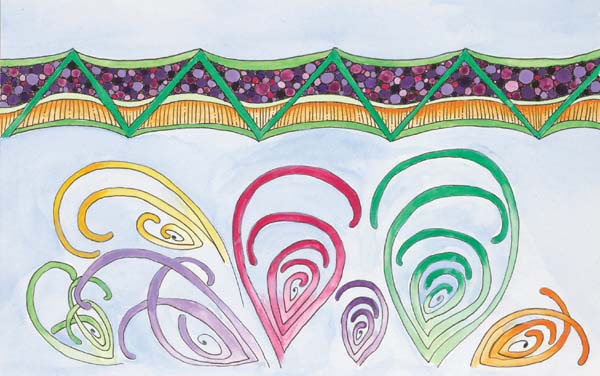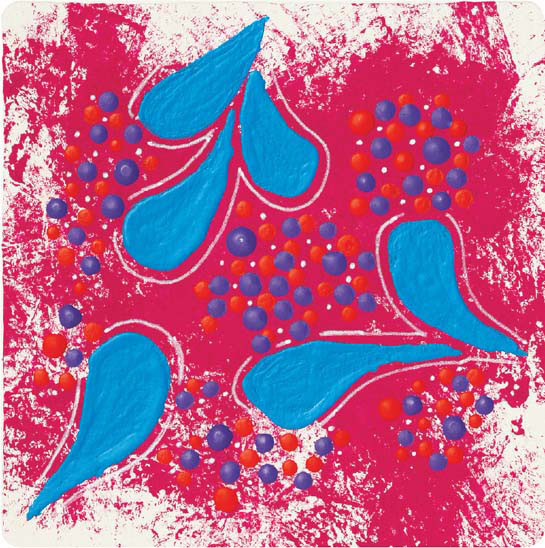Complementary Colors
Here we’re going to look at complementary colors. Complementary colors sit either opposite or at equal distances from each other on the color wheel. These colors always work well together, but don’t be afraid to experiment with them. Use different shades of the colors with each other. This widens your palette and gives you some room to play. And while complementary colors often work best when used as shown, there are no strict rules. Make your art your own. Be brave!
Tip
When referring to the shade of a color, it is when black has been added to it. When referring to the tint of a color, it is when white has been added.
MOOKA COMPLEMENTS
Sakura Pigma Micron pen, watercolor
In Mooka Complements, I used the secondary colors that complement each other, but with a twist. Instead of a clear orange tint, I chose one with a more yellow tint. I didn’t do so intentionally; I just liked the yellow-orange color in my palette and went with it. It worked. The other advantage was that the yellow element of the tint sits equally away from red on the color wheel—and pink is a whitened tint of red. So introducing pink into the work brought a different dimension to the piece, and it came together beautifully. I’ve followed a similar path in Fun at the end of this section.
S-BEND
Tim Holtz Distress Stain, Sakura Souffle pens
ICE CREAM DREAMS
Sakura Gelly Roll pens
By Sue Clark, CZT
FUN
acrylic paint




